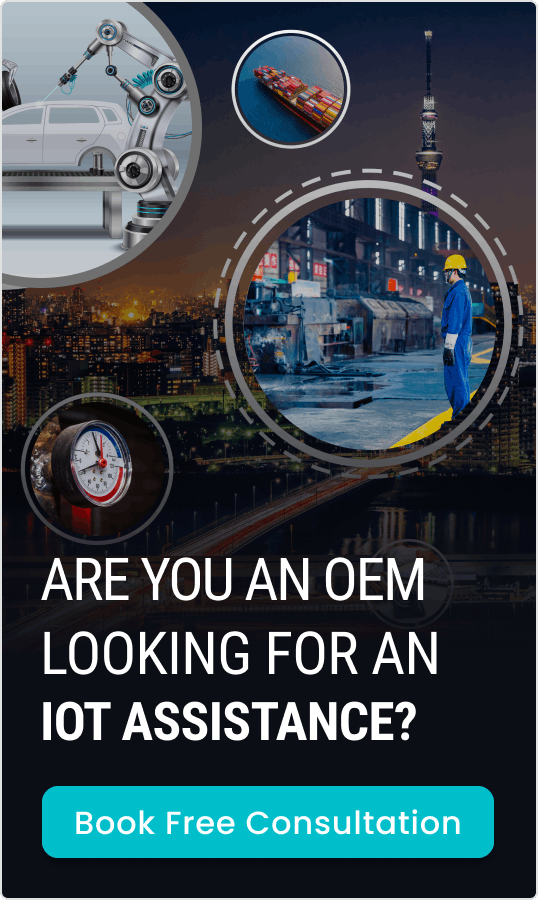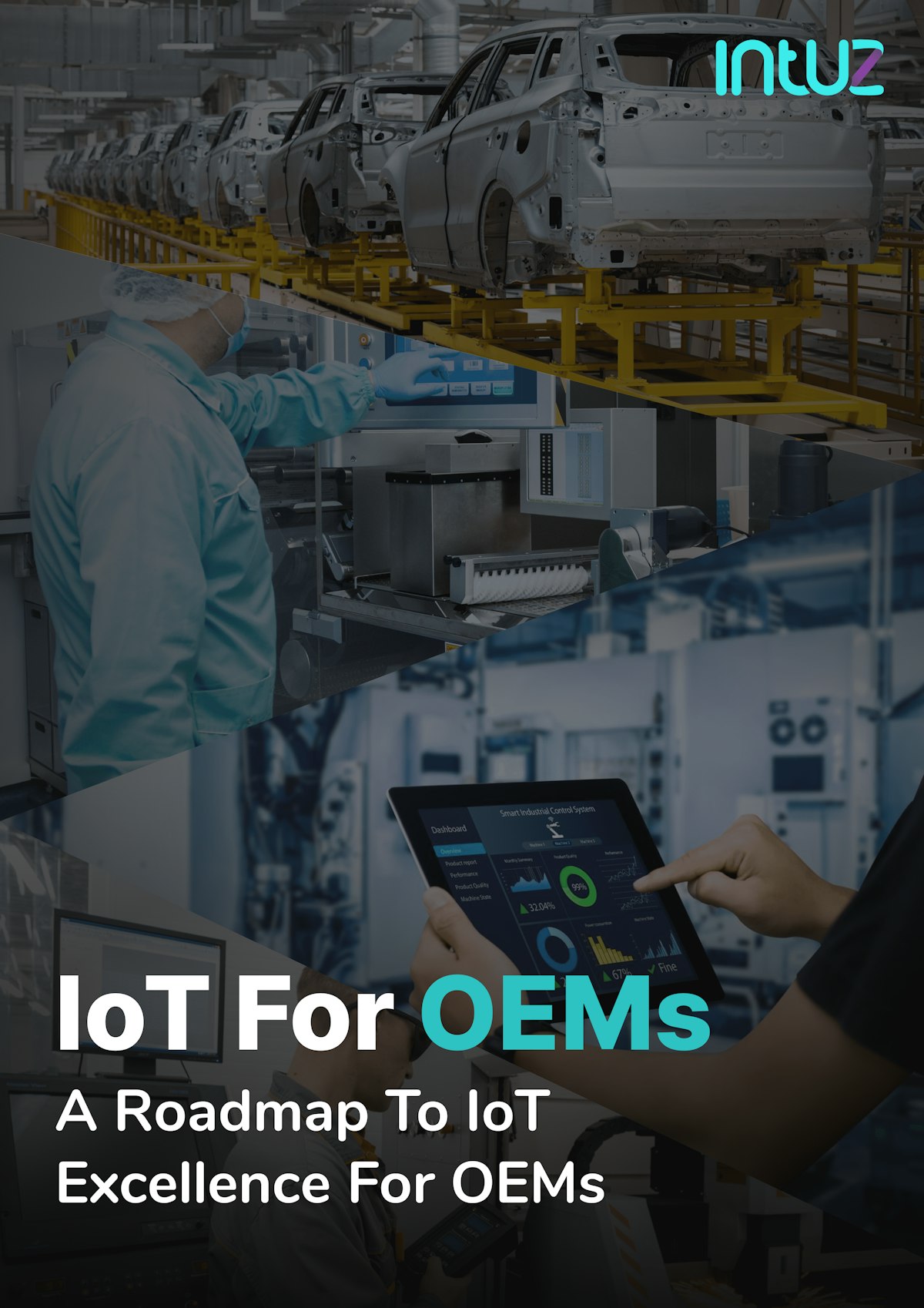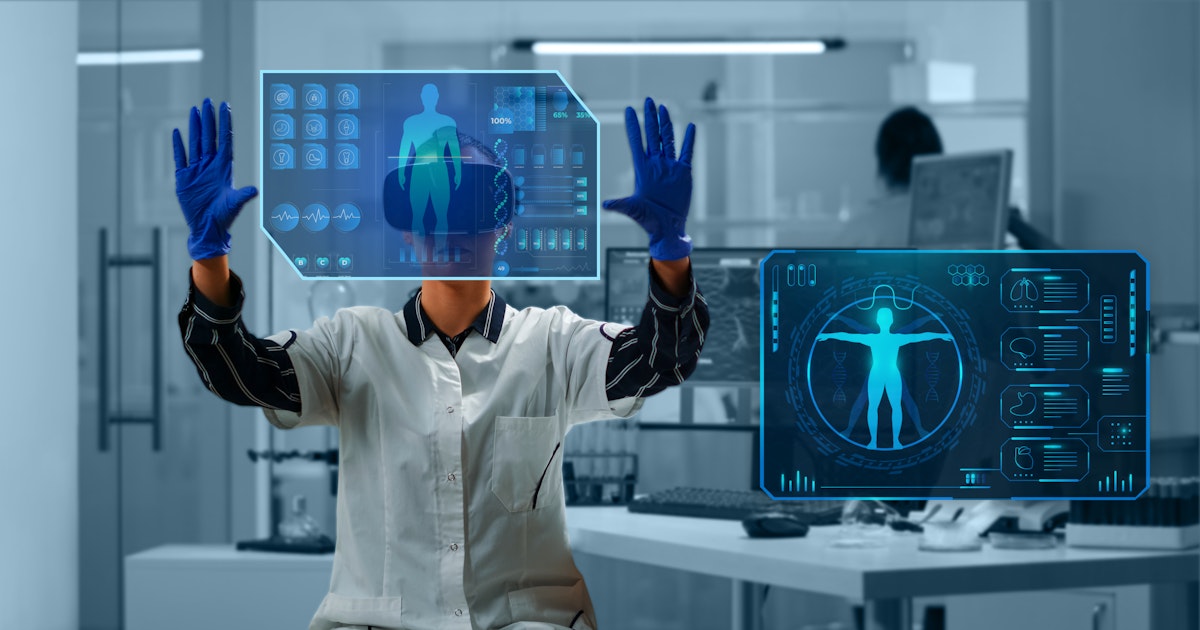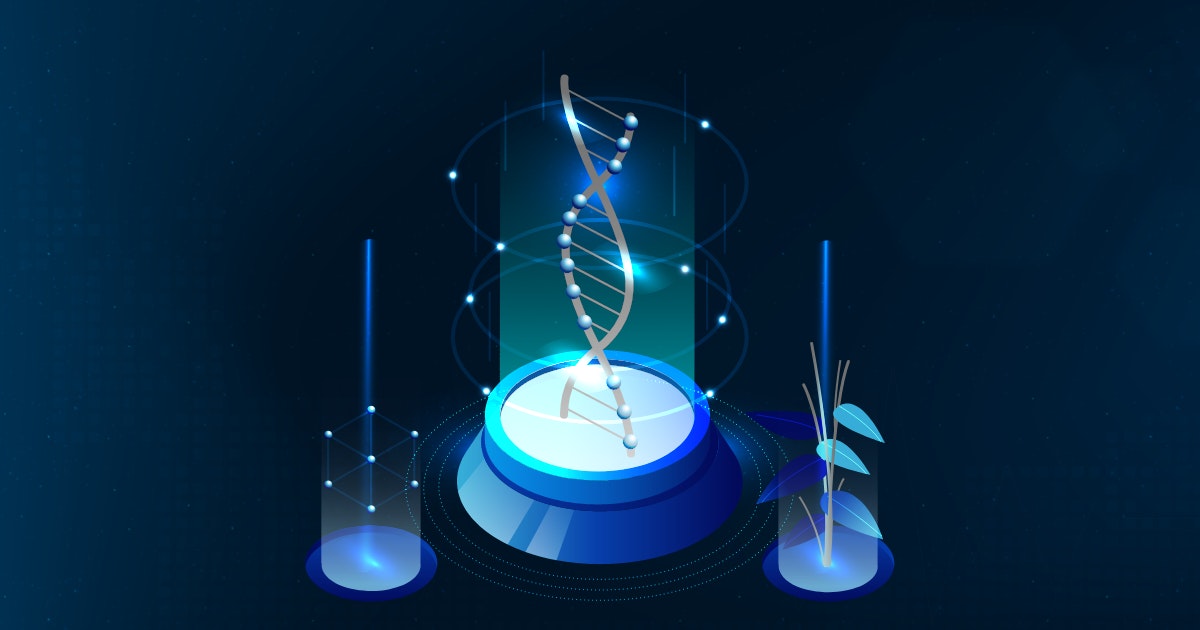Table of Content
The Internet of Medical Things (IoMT) is the latest innovation in the healthcare industry driven by connected devices and cloud storage.
Defined as the amalgamation of medical devices and IoT application development, this innovation helps keep doctors connected to their patients. Deploying health care information technology systems enables remote routine monitoring of patients and other healthcare procedures. The infrastructure of medical devices uses networking technologies such as internet connectivity over Wi-Fi, Bluetooth, and radio transmission.
IoMT involves transmitting information through connected hospital equipment, portable diagnostic gear, and sensor-based wearable technology. Using IoT technologies like device-to-cloud and device-to-device communication, the delivery of digital health services is being made more accessible than ever.
Much like general IoT devices, IoMT, also known as healthcare IoT, makes use of machine-based intelligence, sensors and automation to reduce the dependency of humans during routine healthcare check-ups and procedures.
Patients and their caretakers can conveniently access healthcare information through sensor-based mechanisms. IoMT reduces the need for a visit to the doctor's clinic or hospital. IoMT lowers healthcare costs for both patients and providers.
MedTech and IoMT go hand-in-hand.
MedTech or medical technology companies manufacture innovative products to support the growth of connected health systems. These devices strengthen the digital health infrastructure by generating and transmitting crucial patient information to their caregivers.
They streamline hospital workflows through data-backed diagnoses and efficient treatment. A survey of MedTech companies by Deloitte reveals that manufacturers anticipate the industry to grow to around 68% in the coming years.
That is a considerable number and only shows the potential the industry has. They predict R&D investments in MedTech to reach approximately 42%.
Elevate Patient Care: Discuss Your IoMT Project Today!
Let's Get StartedFactors affecting healthcare sectors' digital transformation
Without a doubt, a digitally transformed healthcare system will help ensure a patient-focused approach, helping healthcare providers to streamline their operations and build loyalty and trust amongst their patients.
However, the transformation is not as easy as it sounds. It is, in fact, plagued by several factors, including:
1. Patient data security
You must remember the healthcare sector deals with sensitive patient information. Offering adequate data security to a large number of connected devices is challenging.
Most IoT devices are vulnerable to cyberattacks, as they do not offer encrypted communication. The impact of a breach is too high as patients trust these devices and are dependent on them for their life.
2. Regulatory changes
Medical devices are imported from across the globe. All countries have different quality standards for their products. There is a lack of universal IoT regulations. It sometimes leads to the incompatibility of equipment and its components.
The process of implementing necessary changes in regulations like HIPAA is slow. It makes the adoption of MedTech equipment more challenging for hospitals, which further hampers the delivery they provide to patients.
3. Digital talent and digital capability
The lack of digitally skilled medical professionals and healthcare workers is another challenge in deploying IoMT solutions. The patient's digital acceptance and compatibility are equally important. No one can guarantee that.
The procedure may not work as expected if either party is not digitally proficient. Knowing the basics of technology is essential. Digital transformation is not possible without that.
4. Trust maintenance in the digital age
It is tough for MedTech companies to build trust for their equipment among doctors and patients. The high potential of data breaches reduces the chances of adoption and may even undermine the benefits of real-time data availability.
5. Interoperability
Interoperability is the ability of two or more devices, systems, or networks to communicate heterogeneously to achieve a common goal. Unfortunately, there are no guidelines for data sharing among technology providers and users.
Data must be made available through open platforms. Moreover, how patient data is transmitted, received, or stored can cause errors and delays — a massive concern in interoperability.
IoMT solutions for different market segments
Irrespective of the challenges, the IoMT brings together both physical and digital worlds to boost the speed and efficiency of diagnosis and treatment — monitoring patient behavior and health status in real-time. Naturally, IoMT is a boon for many segments in healthcare:
1. Patients
IoMT-enabled remote monitoring allows patients to stay connected with their health service provider without visiting a clinic. In addition to reduced costs, patients also benefit from a quick response time in case of a medical emergency.
2. Doctors
Healthcare workers can monitor patient status in real-time. They utilize the hospital's resources and infrastructure optimally. Constant monitoring of disease progression reduces the risk of an emergency and improves patient support.
3. Medical device and medicine manufacturers
MedTech product manufacturers can leverage data to improve drug management. They can gather and communicate data to remote teams. They are also able to implement stringent quality control methods in their drug and medical device production processes.
IoMT devices that are creating a buzz in the industry
Many IoMT devices are steadily contributing to a sophisticated tech ecosystem, paving the way for a better, more efficient healthcare system. An increasing number of developers, in fact, are now offering IoT development services to keep up with the demand.
Some of the popular IoMT devices include:
1. Vitals tracker
These are wireless devices based on multi-parametric sensing. They help monitor the vital signs of the patient's body. They record heart rate, blood pressure, Glucose levels, respiratory rate, blood oxygen saturation, and body temperature. The recorded data is shared with the healthcare provider to enable necessary action.
2. Smart implants
Implantable devices are helpful for patients with critical health conditions. These have both therapeutic benefits and diagnostic capabilities. Driven by application-specific technologies, they read physical changes such as body temperature, strain, and displacements.
Implants like intelligent Orthopedic implants or Pacemakers gather and communicate data to doctors. Reading the changes and the body's response to the implants enables doctors to provide the proper medical assistance in time.
3. Virtual home assistants
At-home nurses are soon going to be a thing of the past. Robotic assistants will now offer 24/7 monitoring of patient's health and provide personalized care. They ensure medication adherence and engage patients in the prescribed healthcare plan.
Natural Language Understanding (NLU) and Natural Language Processing (NLP) enable virtual assistants to resolve medical queries and extend emotional support to patients. This also means no more relying on human intervention for guidance.
4. Personal Emergency Response Systems (PERS)
These are Sensor-based devices that detect unusual activity such as falling or fainting. The device alerts caretakers for emergency assistance. Navigation systems raise the alarm if patients of diseases such as Alzheimer's breach their geo-boundary, thus keeping them safe at all times.
5. Fitness wearables
The smart wearable devices such as smartwatches and fitness trackers we commonly see are known as fitness trackers. These track the wearer's physical activity through sensors. The gadget monitors fitness according to standard parameters and reports any variations to the user.
These are useful for self-monitoring activity and heart rate. Syncing them with smartphone apps, the user can get health and fitness recommendations based on their routine, current weight, and medical history.
6. Remote Patient monitoring devices (RPM)
RPM devices help monitor and assist patients suffering from chronic diseases. Doctors can remotely offer long-term care right at the patient's home. This is a boon, especially in times like these when everyone is cooped up in their homes due to the pandemic.
7. Smart pills
These are ingestible sensors. The minute electronic devices are swallowed by a patient to capture information about the performance of their internal organs. These pills are helpful for precise diagnostics without any invasive procedure. All data collected is wirelessly transmitted to medical care providers so that they can make their prognosis.
Custom Healthcare IoT Solutions Development Company
Explore nowIoMT and Telehealth: two different peas in a pod
Telehealth involves the use of digital devices to obtain patient information and communication technologies to provide healthcare. It involves computers and mobile devices to monitor and manage healthcare remotely.
Telehealth comprises a broad spectrum of medical activities. It includes patient-doctor communications, remote diagnosis, ongoing monitoring, and counseling for behavioral changes.
Along with patient assistance, it also includes healthcare education to caregivers. McKinsey & Co. reports an estimated growth of telehealth services up to 175 times during the pandemic. The report suggests doctors are catering to more patients via remote telehealth than ever.
IoMT, on the other hand, involves the technology and devices that facilitate telehealth. These advanced devices are capable of collecting crucial information. But they cannot assist in improving patient health on their own.
Telehealth leverages the information and offers the necessary assistance to patients. However, it is highly dependent on IoMT devices and cannot work effectively by itself.
As technological adoption widens, these two can be amalgamated through artificial intelligence, machine learning, Big Data, and other evolved technologies. The resulting advanced systems will be capable of delivering healthcare at a faster rate and in a more precise manner.
Though the involvement of a human physician cannot be cut off even with such advanced systems, the evolution will make remote healthcare assistance easier and far more efficient.
Advantages of IoMT
Sure, it is great to leverage the power of IoT to contextualize, quantify and communicate the interactions between devices and help the healthcare industry provide solutions offering value to all stakeholders. Patients and healthcare providers particularly can benefit from the following advantages of IoMT:
1. Personalized assistance
Regular monitoring of patient health and vital statistics through IoMT devices helps doctors provide personalized treatment. As doctors have more information about the patient's health, they can diagnose diseases with higher accuracy.
2. Remote treatment
IoMT devices cut down the patient's need to visit the hospital for routine checkups. All the data gathered by the devices is uploaded to a secure cloud server. Healthcare professionals can access the data and prescribe treatment.
They can keep track of patient compliance and adjust treatment paradigms. This proved to be a significant benefit during the recent health crisis as hospital visits were not advisable due to increased chances of infection.
3. Precise diagnosis
Smarter IoMT devices use advanced sensors to collect accurate information on organ performance and other vital data. The massive volume of daily analysis data helps doctors diagnose the disease better than a short-duration visit to their clinic. They can keep a check on any developments and adjust medication accordingly.
4. Empowering patients
Wearable gadgets and smart devices allow patients to monitor their fitness levels by themselves. So instead of waiting for a doctor's visit, they can monitor their vitals regularly and keep a check on their health.
5. Reduce costs
Technology-driven healthcare systems are cost-effective compared to traditional methods. According to research by Goldman Sachs, the costs of providing healthcare to high-risk patients such as those suffering from diabetes, asthma, and so on are the highest.
Centralized digital mechanisms allow doctors to deliver timely resolution and preventive medical assistance remotely.
6. Better treatment
Healthcare providers can cater to critically ill patients through remote monitoring. Using IoMT devices, they can provide around-the-clock care, reducing dependence on human caretakers. The treatment is more reliable as its effectiveness can be tracked through the sensor-based mechanism. Alerting systems keep doctors informed in case of any emergency.
IoT And Biotechnology: An Incredible Technology Fusion Not To Miss In 2023
Read NowIn conclusion: IoMT is here to stay.
IoMT is no longer hypothetical; doctors are already using it. MedTech companies must ensure providing cutting-edge technologies with brighter outcomes for both caregivers and patients. The benefits IoMT offers outnumber the risks involved in implementing it.
Connected devices give healthcare professionals the capability to offer improved quality of care at lower costs. Beyond the convenience of remote caretaking, data security is a major risk involved.
Companies are coming up with advanced models to address healthcare security concerns. Frost & Sullivan predicts the healthcare security market to grow up to $8.7 billion by 2023.
The report also highlights the need to integrate existing healthcare IT systems and applications with technologies such as IoT, cloud, and Big Data. MedTech manufacturers must keep up with advancements in these technologies to deliver foolproof IoMT solutions.
Book a 45-minute free consultation with our IoMT expert today and get a free strategy or roadmap leveraging IoMT for your healthcare organization.






